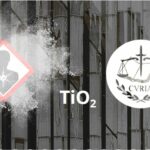
Regulating nanos in medical devices

Regulating nanos in medical devices
By the AVICENN team – Last modification April 2022
At the European level
In Europe, nanos in medical devices are regulated by Regulation (EU) 2017/745 of the European Parliament and Council of 5 April 2017.
The definition of the term “nanomaterial” is close to that of the European definition “recommendation” of 2011. According to “Rule 19”, “All devices that incorporate or are made of a nanomaterial fall under:
- Class III if they have a medium or high internal exposure potential,
- Class IIb if they have a low potential for internal exposure, and
- Class IIa if they have negligible internal exposure potential.
It is unclear how the exposure potentials are evaluated…
– In French :
- Workshop on nanomedicines and nanomaterial-based medical devices, LNE, June 30, 2022
- Nanomaterials: special requirements for medical devices, LNE & DeviceMed, 22 April 2022
– In English:
In France
An ANSM report (published after 2017)1Nanomaterials in Medicines and Medical Device, ANSM, undated, it was written after 2017 recommends:
- to bring evolutions to the standardization and regulation for a better identification and evaluation of nanomedicines and medical devices
- to make changes to the R-nano register (converging with the demands of the precautionary and prevention actors)
- increased involvement of ANSM on the subject
- etc.
In the United States
In the United States, the Food & Drug Administration (FDA) recommendations are published in the following document: Drug Products, Including Biological Products, that Contain Nanomaterials – Guidance for Industry, April 2022
Any questions or comments? This information sheet compiled by AVICENN is intended to be completed and updated. Please feel free to contribute.
Our information sheets to go further
Other news on the topic
Upcoming Nano Agenda
- Spectacle Art & Science – When science changes as it passes from mouth to mouth
- A unique participatory experience centered on the human factory of knowledge, where two fascinating worlds meet: nanomedicine, with its nanoparticles and cellular nanovectors, and quantum physics, with its superimposed states and complex systems.
- Organizers: Centre National de Compétences en Nanosciences (C’Nano), in collaboration with the Commissariat à l’Énergie Atomique (CEA), the Institut Polytechnique de Paris (IPP) and the Centre National de la Recherche Scientifique (CNRS).
- Speakers: Florence Gazeau, academician, physicist, research director at CNRS, and Charles Antoine, PhD in physics, lecturer at Sorbonne University, and Albert Moukheiber, PhD in neuroscience.
- Location: Théâtre de la Ville
- Website: https: //www.theatredelaville-paris.com/…/rencontres/nano-rumeurs…
- 8th Congress of Occupational Medicine and Health (CNMST 2026)
- Theme 5: Emerging pathologies and risks, Mr Henri Bastos (ANSES), Pr Lynda Bensefa-Colas (AP-HP), Dr Catherine Nisse (CHU Lille)
- Website: www.medecine-sante-travail.com
- 20th meeting of the “nano and health” dialogue committee
- Organizer: ANSES
This sheet was originally created in February 2019
Notes and references
- 1Nanomaterials in Medicines and Medical Device, ANSM, undated, it was written after 2017



